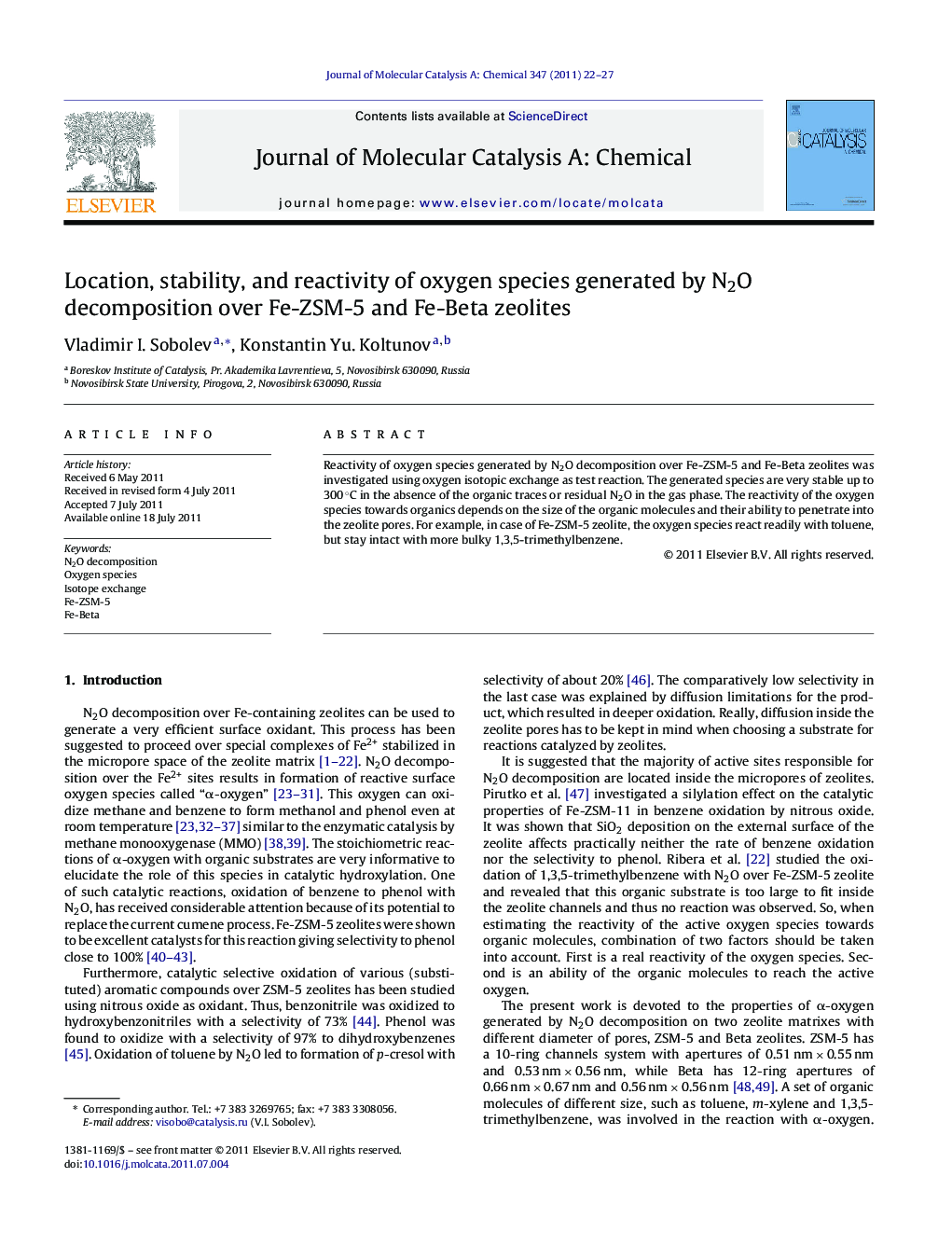| Article ID | Journal | Published Year | Pages | File Type |
|---|---|---|---|---|
| 66269 | Journal of Molecular Catalysis A: Chemical | 2011 | 6 Pages |
Reactivity of oxygen species generated by N2O decomposition over Fe-ZSM-5 and Fe-Beta zeolites was investigated using oxygen isotopic exchange as test reaction. The generated species are very stable up to 300 °C in the absence of the organic traces or residual N2O in the gas phase. The reactivity of the oxygen species towards organics depends on the size of the organic molecules and their ability to penetrate into the zeolite pores. For example, in case of Fe-ZSM-5 zeolite, the oxygen species react readily with toluene, but stay intact with more bulky 1,3,5-trimethylbenzene.
Graphical abstractOxygen isotope exchange was used to determined the amount of surface oxygen (α-oxygen) atoms generated by N2O decomposition before and after its reactions with a set of organic molecules of different size (toluene, m-xylene and 1,3,5-trimethylbenzene). The ability of these molecules to react with α-oxygen depends on the pore size of zeolite and the dimensions of the molecules.Figure optionsDownload full-size imageDownload high-quality image (133 K)Download as PowerPoint slideHighlights► Active oxygen species were generated over Fe-ZSM-5 and Fe-Beta zeolites. ► These species are located inside the micropores of zeolites. ► The species are very stable in the absence of the organic traces in the gas phase. ► Their accessibility depends on the diameter of the zeolite channels.
